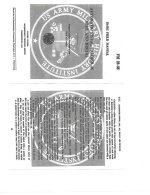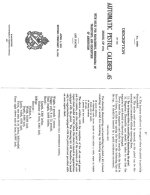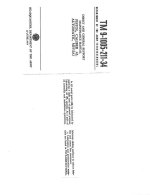You are using an out of date browser. It may not display this or other websites correctly.
You should upgrade or use an alternative browser.
You should upgrade or use an alternative browser.
Grease or oil
- Thread starter mytyace
- Start date
Register to hide this ad
kbm6893
Member
Do you prefer grease or oil on the rail between the slide and frame on 3rd gens? Is there any other place you prefer grease over oil?
I use grease in the groove in slide for the rails. Doesn’t dry up like oil does. just a tiny dab and then rack slide a bunch to spread it around.
Jeppo
Member
This thread, and particularly the discussion by BMCM, is an excellent reference.
http://smith-wessonforum.com/140096149-post46.html
http://smith-wessonforum.com/140096149-post46.html
Either is better than nothing, but I was taught to use grease if it slides and oiled if it spins.
Pisgah
Member
As far as I can determine, Smith and Wesson has never recommended anything but oil. If anyone can show me differently in a S&W manual, I'll change my mind, but until then -- oil is what is called for.
Either is better than nothing, but I was taught to use grease if it slides and oiled if it spins.
The perfect answer
Hair Trigger
US Veteran
Either is better than nothing, but I was taught to use grease if it slides and oiled if it spins.
Same here. I use Lubriplate 130-A on all my semiauto slides and rifle carriers/bolts/oprods. Everything else gets M-Pro7 LPX oil.
Gun Oil LPX - M-Pro 7
In both cases, it's like Brylcreem, a little dab'll do ya.
I use grease. Tetra on most guns. RIG on all-stainless guns. It works.
As far as I can determine, Smith and Wesson has never recommended anything but oil. If anyone can show me differently in a S&W manual, I'll change my mind, but until then -- oil is what is called for.
I've never seen any major manufacturer recommend anything but oil. The only exception I can think of is the US Military and the M1 Garand.
I've used both on multiple platforms. I've never noticed any difference.
I thought grease was preferred on slides until I found out it doesn't work real well in cold weather. I was using Tetra on a 1911 slide in freezing temps and it froze up the slide. I went to oil and never had that problem again. Probably why the US military uses CLP instead of grease.
They have a better solution for new weapons but it's applied in the manufacturing process and not available to the unwashed masses.
CLP works for me. Of course if you don't shoot in freezing weather it doesn't matter.
Many people just use Mobile 1, which is a synthetic oil. If it works on the internal components in a combustible engine it should work on a pistol slide.
They have a better solution for new weapons but it's applied in the manufacturing process and not available to the unwashed masses.
CLP works for me. Of course if you don't shoot in freezing weather it doesn't matter.
Many people just use Mobile 1, which is a synthetic oil. If it works on the internal components in a combustible engine it should work on a pistol slide.
Last edited:
bigwheelzip
Absent Comrade
The pistol shows you wear patterns in the finish surfaces where it wants lube. I've been using TW25B as "grease" on those places. It stays where it's placed, doesn't attract dirt, and doesn't run when the gun gets hot.
Sent from my motorola one 5G using Tapatalk
Sent from my motorola one 5G using Tapatalk
Excellent answer and my philosophy as well.Either is better than nothing, but I was taught to use grease if it slides and oiled if it spins.
Vanilla Gorilla
Member
I'm no professional on S&W autos or really any other autos, other than being a Glock master armorer (and that doesn't take much, at all). With that said, I put Mobil1 5w-20 in both my jeeps, and all my guns. I haven't had it fail me yet.
gwpercle
Member
My gun grease of choice ... Lucas Red-N-Tacky .
I have an early AMT Hardballer , the first stainless steel 1911 ever manufactured and back then all the bugs with SS on SS galling and lubrication hadn't been worked out , Lucas R-N-T is a Lithium based grease that worked on the AMT 1911 slide/rails . Made to grease wheel bearings and resist being washed off with water ... makes a danged good grease for any metal on metal rubbing parts and tends to stay in place .
Gary
I have an early AMT Hardballer , the first stainless steel 1911 ever manufactured and back then all the bugs with SS on SS galling and lubrication hadn't been worked out , Lucas R-N-T is a Lithium based grease that worked on the AMT 1911 slide/rails . Made to grease wheel bearings and resist being washed off with water ... makes a danged good grease for any metal on metal rubbing parts and tends to stay in place .
Gary
Last edited:
I was taught to use oil if it rotates and greaseif it slides - with a couple common sense caveats.
Grease first.
On a semi auto like an M1, M1A, BM-59, M1 Carbine, Mini-14, etc there are specific points that call for grease. And most of those points have shiny spots on them. On those above rifles, it’s:
- the roller on the bolt;
- the recess for that lug or roller in the slide;
- the square retainer lug on the back of the slide;
- that shiny spot on the back of the bolt where it contacts the top of the receiver;
- the shiny spot on the bottom of the op rod where it contacts the bottom of the barrel; and
The shiny curved section of the hammer.
But you don’t have to remember that because if it’s shiny it gets a light coat of grease.
As noted above no manufacturer seems to recommend grease on slide rails. However, pistols like the 1911 like to run wet and pistols with aluminum allow frames absolutely need to run wet to keep the steel slide from excessively wearing the aluminum frame rail.
That leaves you with the option of using a sufficient amount of oil to keep the rails wet, and if it’s not slinging oil at you when it cycles the first few times it probably isn’t enough.
However, you also have the option of using a thin coat of grease. Here in the south, grease is my go to lubricant for frame and slide rails, the locking lug detents, and a light shine of grease on the guide rod. That gives me long lasting, non dripping, holster and concealed carry friendly lubrication.
This is where some common sense is required. I live in the south now, but grew up in the frozen north and spent about half my adult years there. When it’s -20 F, grease can be a problem. So can many higher viscosity oils. That’s one of the few places and times where I think CLP is a good choice. Rem oil isn’t bad either given it’s low viscosity. Even here on NC when it gets down near freezing in the winter, lightly grease slide rails can start to cause malfunctions in some pistols as slide velocity is reduced.
Even on a bolt action rifle, if I was going to grab a white sheet and go out on skis to hunt coyotes, I disassembled the bolt, cleaned all the grease and oil off it and the firing pin, and then very lightly oiled it with CLP, and only used a very thin coat of grease on the bolt cocking/camming surfaces. I’d usually do that at the onset of winter and call it good.
Too much grease is also a bad idea as it can hold onto any grit it comes in contact with.
What kind of grease? There’s nothing wrong with Tetra or Rig.
Mil-spec rifle grease is fine, but it’s not “better” just because it’s mil-spec. At the time that specification was adopted the primary consideration was resistance to washing off. Any lithium grease you find at the local auto parts store will exceed that specification and they will all provide equal or better lubrication.
That said I use military rifle grease as I bought a few cans way back in the day when they were dirt cheap and that supply will outlast me.
——
Now let’s talk about oil.
For general lubrication I like Rem Oil. It’s thin, gets where it needs to be and doesn’t gunk up if it gets where it shouldn’t be, and offers a reasonable degree of rust protection.
I’m not a CLP fan as it’s pretty volatile (it’s a cleaner as well) and once it dries down, it offers very little protection. I generally regard CLP as declining in performance in that same letter order.
In the military I landed squarely between wars and in the transition from the M16A1 to the M16A2, the 1911A1 to the M9, and from LSA to CLP. All of those were in my opinion moves in the wrong direction.
CLP worked only because we put it on regularly and pretty liberally. There were folks later on who advocated running the M16 almost dry as oil would attract grit. It was a nice thought, but the M16/M4 likes to run wet. You just need to pop the rear pin, pull the bolt, wipe it and the inside of the upper receiver and then relube it - every time you get the chance and or get sand in it.
For long term rust protection neither CLP nor Rem oil works all that well as both dry out and don’t leave much of a protective film. Hoppes Gun Oil on the other hand does fine, even here in hot and humid eastern NC. It leaves a good protective coat that will last for several months. Try not to get too much in the internal parts of the gun however.
For my concealed carry handguns, I’ll lube the internals with rem oil and then wipe down the outer surfaces with a patch with Hoppes Gun oil on it.
——
Please note that Hoppes Gun Oil and Hoppes No. 9 are not the same product. Hoppes No 9 is a powder and copper solvent and provides absolutely no rust protection once it dries out. In fact it usually removes any oil and grease as well and acts as a degreasing agent in the long term.
Grease first.
On a semi auto like an M1, M1A, BM-59, M1 Carbine, Mini-14, etc there are specific points that call for grease. And most of those points have shiny spots on them. On those above rifles, it’s:
- the roller on the bolt;
- the recess for that lug or roller in the slide;
- the square retainer lug on the back of the slide;
- that shiny spot on the back of the bolt where it contacts the top of the receiver;
- the shiny spot on the bottom of the op rod where it contacts the bottom of the barrel; and
The shiny curved section of the hammer.
But you don’t have to remember that because if it’s shiny it gets a light coat of grease.
As noted above no manufacturer seems to recommend grease on slide rails. However, pistols like the 1911 like to run wet and pistols with aluminum allow frames absolutely need to run wet to keep the steel slide from excessively wearing the aluminum frame rail.
That leaves you with the option of using a sufficient amount of oil to keep the rails wet, and if it’s not slinging oil at you when it cycles the first few times it probably isn’t enough.
However, you also have the option of using a thin coat of grease. Here in the south, grease is my go to lubricant for frame and slide rails, the locking lug detents, and a light shine of grease on the guide rod. That gives me long lasting, non dripping, holster and concealed carry friendly lubrication.
This is where some common sense is required. I live in the south now, but grew up in the frozen north and spent about half my adult years there. When it’s -20 F, grease can be a problem. So can many higher viscosity oils. That’s one of the few places and times where I think CLP is a good choice. Rem oil isn’t bad either given it’s low viscosity. Even here on NC when it gets down near freezing in the winter, lightly grease slide rails can start to cause malfunctions in some pistols as slide velocity is reduced.
Even on a bolt action rifle, if I was going to grab a white sheet and go out on skis to hunt coyotes, I disassembled the bolt, cleaned all the grease and oil off it and the firing pin, and then very lightly oiled it with CLP, and only used a very thin coat of grease on the bolt cocking/camming surfaces. I’d usually do that at the onset of winter and call it good.
Too much grease is also a bad idea as it can hold onto any grit it comes in contact with.
What kind of grease? There’s nothing wrong with Tetra or Rig.
Mil-spec rifle grease is fine, but it’s not “better” just because it’s mil-spec. At the time that specification was adopted the primary consideration was resistance to washing off. Any lithium grease you find at the local auto parts store will exceed that specification and they will all provide equal or better lubrication.
That said I use military rifle grease as I bought a few cans way back in the day when they were dirt cheap and that supply will outlast me.
——
Now let’s talk about oil.
For general lubrication I like Rem Oil. It’s thin, gets where it needs to be and doesn’t gunk up if it gets where it shouldn’t be, and offers a reasonable degree of rust protection.
I’m not a CLP fan as it’s pretty volatile (it’s a cleaner as well) and once it dries down, it offers very little protection. I generally regard CLP as declining in performance in that same letter order.
In the military I landed squarely between wars and in the transition from the M16A1 to the M16A2, the 1911A1 to the M9, and from LSA to CLP. All of those were in my opinion moves in the wrong direction.
CLP worked only because we put it on regularly and pretty liberally. There were folks later on who advocated running the M16 almost dry as oil would attract grit. It was a nice thought, but the M16/M4 likes to run wet. You just need to pop the rear pin, pull the bolt, wipe it and the inside of the upper receiver and then relube it - every time you get the chance and or get sand in it.
For long term rust protection neither CLP nor Rem oil works all that well as both dry out and don’t leave much of a protective film. Hoppes Gun Oil on the other hand does fine, even here in hot and humid eastern NC. It leaves a good protective coat that will last for several months. Try not to get too much in the internal parts of the gun however.
For my concealed carry handguns, I’ll lube the internals with rem oil and then wipe down the outer surfaces with a patch with Hoppes Gun oil on it.
——
Please note that Hoppes Gun Oil and Hoppes No. 9 are not the same product. Hoppes No 9 is a powder and copper solvent and provides absolutely no rust protection once it dries out. In fact it usually removes any oil and grease as well and acts as a degreasing agent in the long term.
Always oil...Lucas or Rem
Oil only...unless your "cosmic"
Lots of good ideas here, especially the post from BB57...kinda spells it all out.
I always believed that no one could know more about the subject than a: the manufacturer(s) and b: the United States Army..with all their Generals on down, experts in every field, backed by zillions of taxpayer dollars to research the best and final methods for anything.
So...went a did a little research this morning into my various FM's, TM's and official new knighted states governmint pubs, a little cut-paste & scan and you can see below: 1914 manual on the model 1911..only mention of grease is a cosmic pot...to be used for cosmic. The you see 1940...oil only no more grease, cosmic or not. The 1964 now MUST get oil. Then the M1 Garand (1965) with the grease points pictured and labelled..so they are serious.
The you see 1940...oil only no more grease, cosmic or not. The 1964 now MUST get oil. Then the M1 Garand (1965) with the grease points pictured and labelled..so they are serious.
Lastly...question for BB57...your location is North Carolina, so I would think a connection to the USS North Carolina (BB55) rather than BB57 (USS South Dakota) or does your avatar not referencing any of these majestic battlewagons?
Anybody ever in Wilmington NC, take the tour...well worth it.
Lots of good ideas here, especially the post from BB57...kinda spells it all out.
I always believed that no one could know more about the subject than a: the manufacturer(s) and b: the United States Army..with all their Generals on down, experts in every field, backed by zillions of taxpayer dollars to research the best and final methods for anything.
So...went a did a little research this morning into my various FM's, TM's and official new knighted states governmint pubs, a little cut-paste & scan and you can see below: 1914 manual on the model 1911..only mention of grease is a cosmic pot...to be used for cosmic.
Lastly...question for BB57...your location is North Carolina, so I would think a connection to the USS North Carolina (BB55) rather than BB57 (USS South Dakota) or does your avatar not referencing any of these majestic battlewagons?
Anybody ever in Wilmington NC, take the tour...well worth it.
Attachments
I've never used grease but, hmmmmm.......
Similar threads
- Replies
- 9
- Views
- 447
- Replies
- 34
- Views
- 1K





